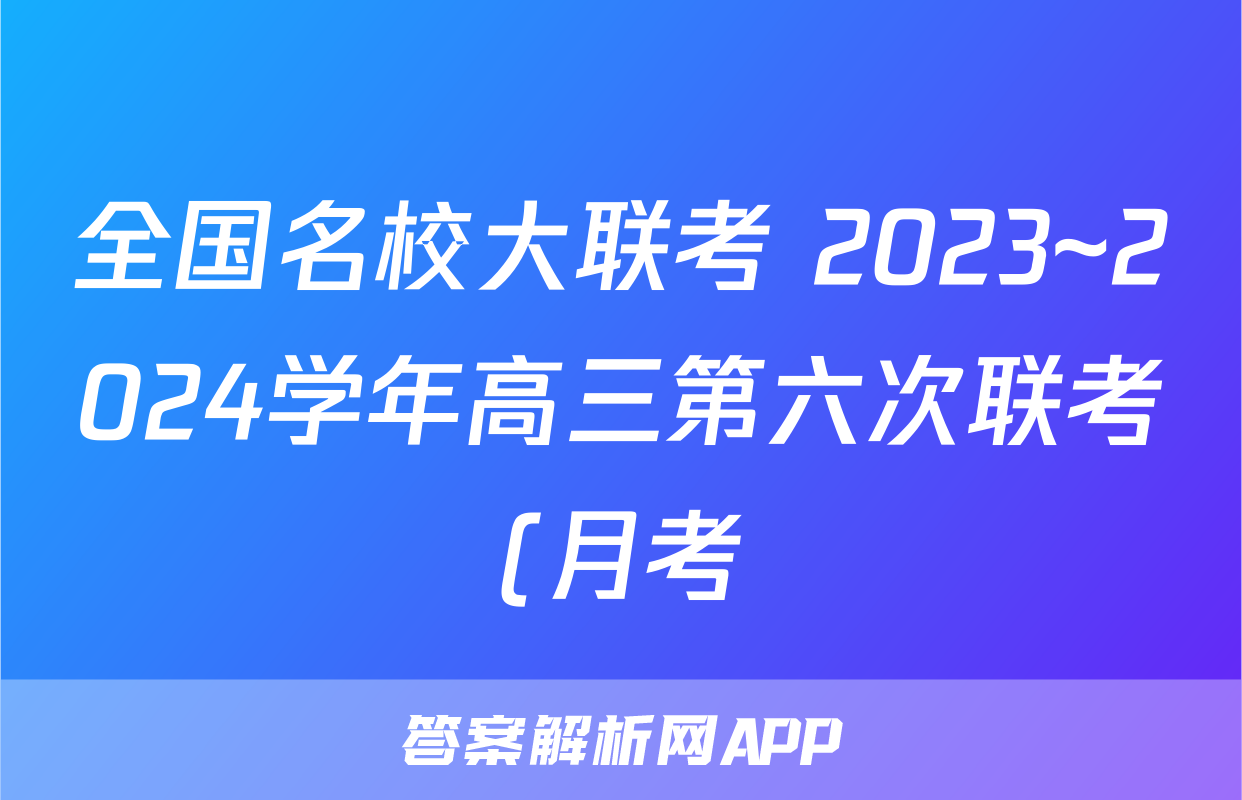
全国名校大联考 2023~2024学年高三第六次联考(月考)试卷英语答案,目前2025-2026衡水金卷答案网已经汇总了全国名校大联考 2023~2024学年高三第六次联考(月考)试卷英语答案的各科答案和试卷,获取更多{{papers_name}}答案解析,请在关注本站。
本文从以下几个角度介绍。
-
1、全国名校大联考2023-2024学年度高三第二次联考
2、名校大联考2023-2024高三第六次联考英语
3、全国名校2024年高三6月大联考英语答案
4、全国名校联考2024第二次
5、全国名校联考2024高三第二次联考
6、名校大联考2023-2024学年度高三第二次联考英语
7、名校大联考2023-2024高三第四次联考英语
8、名校大联考2023-2024高三第四次联考英语答案
9、名校大联考2023-2024学年度高三第一次联考英语
10、名校大联考2023-2024学年度高三第二次联考英语
试卷英语答案) communication for mobile devices.The chip turns Bluetooth signals into WiFi signals,which can in turnbe detected by a smartphone with that specific software updateThe technology's broader promise is the development of devices that do not need batteries becausethey can harvest power from LTE signals instead.This in turn would lead to devices that are significantlyless expensive that last longer,said Dinesh Bharadia,one of the paper's senior authors."E-waste,especially batteries,is one of the biggest problems the planet is facing,after climatechange,"Bharadia said.For future research,the team will integrate this technology into other projects to demonstrate itscapabilities,and they also hope to commercialize it,either through a startup or through an industry partner.24.How does the chip link up with the phone?A.By providing power for the phoneB.By producing LTE signals for the phone.C.By sending WiFi signals back to the phone.D.By giving Bluetooth signals to the phone.25.What is the potential of the technology according to Bharadia?A.Making batteries cheap.B.Cutting down e-wasteC.Supplying power to LTE signals.D.Decreasing the cost ofLTE signals.26.What will the team do in the future?A.Invest in new technologies.B.Put the technology to market.C.Improve the quality of the device.D.Commercialize more research projects.27.Which is the most suitable title for the text?A.Backscatter communication makes the best of smartphonesB.Smartphones need to be equipped with soft updatesC.RFID readers obtain new chips and have new functionsD.New technology turns smartphones into RFID readersCThe integration of artificial intelligence (AD)in educational technology (EdTech)has broughtconvenience and efficiency beyond comparison to classrooms worldwide.However,despite theseadvancements,it is crucial to recognize the challenges these AI-driven tools pose to the autonomy andprofessional judgment of instructors.One of its primary concerns is the depersonalization of instruction.These tools often rely onpre-packaged digital content and standardized solutions,leaving insufficient room for instructors to tailor5
communication for mobile devices.The chip turns Bluetooth signals into WiFi signals,which can in turnbe detected by a smartphone with that specific software updateThe technology's broader promise is the development of devices that do not need batteries becausethey can harvest power from LTE signals instead.This in turn would lead to devices that are significantlyless expensive that last longer,said Dinesh Bharadia,one of the paper's senior authors."E-waste,especially batteries,is one of the biggest problems the planet is facing,after climatechange,"Bharadia said.For future research,the team will integrate this technology into other projects to demonstrate itscapabilities,and they also hope to commercialize it,either through a startup or through an industry partner.24.How does the chip link up with the phone?A.By providing power for the phoneB.By producing LTE signals for the phone.C.By sending WiFi signals back to the phone.D.By giving Bluetooth signals to the phone.25.What is the potential of the technology according to Bharadia?A.Making batteries cheap.B.Cutting down e-wasteC.Supplying power to LTE signals.D.Decreasing the cost ofLTE signals.26.What will the team do in the future?A.Invest in new technologies.B.Put the technology to market.C.Improve the quality of the device.D.Commercialize more research projects.27.Which is the most suitable title for the text?A.Backscatter communication makes the best of smartphonesB.Smartphones need to be equipped with soft updatesC.RFID readers obtain new chips and have new functionsD.New technology turns smartphones into RFID readersCThe integration of artificial intelligence (AD)in educational technology (EdTech)has broughtconvenience and efficiency beyond comparison to classrooms worldwide.However,despite theseadvancements,it is crucial to recognize the challenges these AI-driven tools pose to the autonomy andprofessional judgment of instructors.One of its primary concerns is the depersonalization of instruction.These tools often rely onpre-packaged digital content and standardized solutions,leaving insufficient room for instructors to tailor5
